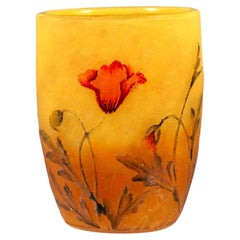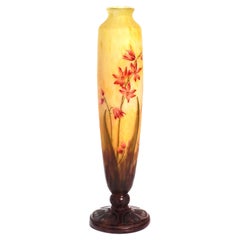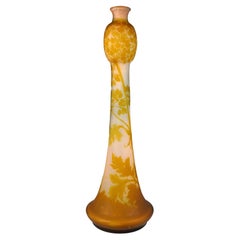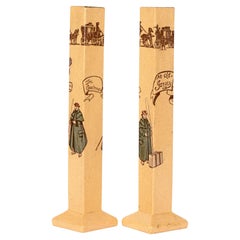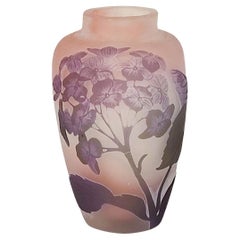Vases
Early 1900s French Art Nouveau Antique Vases
Glass
Early 1900s French Art Nouveau Antique Vases
Art Glass
Early 1900s French Art Nouveau Antique Vases
Glass
Early 1900s English Aesthetic Movement Antique Vases
Porcelain
Early 1900s English Art Deco Antique Vases
Pottery
Early 1900s Austrian Art Nouveau Antique Vases
Glass
Early 1900s Czech Art Nouveau Antique Vases
Art Glass
Early 1900s French Art Nouveau Antique Vases
Art Glass
Early 1900s American Antique Vases
Art Glass
Early 1900s Austrian Jugendstil Antique Vases
Glass
Early 1900s Swedish Art Nouveau Antique Vases
Ceramic
Early 1900s American Art Nouveau Antique Vases
Art Glass
Early 1900s Antique Vases
Early 1900s French Art Nouveau Antique Vases
Glass
Early 1900s Antique Vases
Art Glass
Early 1900s French Art Nouveau Antique Vases
Blown Glass
Early 1900s Austrian Art Nouveau Antique Vases
Blown Glass
1890s Czech Art Nouveau Antique Vases
Art Glass
1930s North American Art Deco Vintage Vases
Pottery
Early 1900s French Art Nouveau Antique Vases
Glass
1890s English Art Nouveau Antique Vases
Stoneware
Early 20th Century Japanese Meiji Vases
Pottery
1870s Czech Art Nouveau Antique Vases
Spelter
Early 20th Century Czech Art Nouveau Vases
Brass
Early 1900s Austrian Jugendstil Antique Vases
Glass
1930s French Art Deco Vintage Vases
Glass
1910s French Art Nouveau Vintage Vases
Glass
Early 1900s French Art Nouveau Antique Vases
Art Glass
Early 1900s American Art Nouveau Antique Vases
Art Glass
Early 1900s French Art Nouveau Antique Vases
Glass
Early 1900s Austrian Jugendstil Antique Vases
Glass, Blown Glass
Early 1900s Austrian Jugendstil Antique Vases
Blown Glass
Early 1900s French Art Nouveau Antique Vases
Glass
Early 1900s French Art Nouveau Antique Vases
Art Glass
Early 1900s French Art Nouveau Antique Vases
Art Glass
Early 1900s French Art Nouveau Antique Vases
Glass
Early 1900s French Art Nouveau Antique Vases
Art Glass
Early 1900s French Art Nouveau Antique Vases
Art Glass
Early 1900s French Edwardian Antique Vases
Pottery
Antique and Vintage Vases for Sale
Whether it’s a Chinese Han dynasty glazed ceramic wine vessel, a work of Murano glass or a hand-painted Scandinavian modern stoneware piece, a fine vase brings a piece of history into your space as much as it adds a sophisticated dynamic.
Like sculptures or paintings, antique and vintage vases are considered works of fine art. Once offered as tributes to ancient rulers, vases continue to be gifted to heads of state today. Over time, decorative porcelain vases have become family heirlooms to be displayed prominently in our homes — loved pieces treasured from generation to generation.
The functional value of vases is well known. They were traditionally utilized as vessels for carrying dry goods or liquids, so some have handles and feature an opening at the top (where they flare back out). While artists have explored wildly sculptural alternatives over time, the most conventional vase shape is characterized by a bulbous base and a body with shoulders where the form curves inward.
Owing to their intrinsic functionality, vases are quite possibly versatile in ways few other art forms can match. They’re typically taller than they are wide. Some have a neck that offers height and is ideal for the stems of cut flowers. To pair with your mid-century modern decor, the right vase will be an elegant receptacle for leafy snake plants on your teak dining table, or, in the case of welcoming guests on your doorstep, a large ceramic floor vase for long tree branches or sticks — perhaps one crafted in the Art Nouveau style — works wonders.
Interior designers include vases of every type, size and style in their projects — be the canvas indoors or outdoors — often introducing a splash of color and a range of textures to an entryway or merely calling attention to nature’s asymmetries by bringing more organically shaped decorative objects into a home.
On 1stDibs, you can browse our collection of vases by material, including ceramic, glass, porcelain and more. Sizes range from tiny bud vases to massive statement pieces and every size in between.
